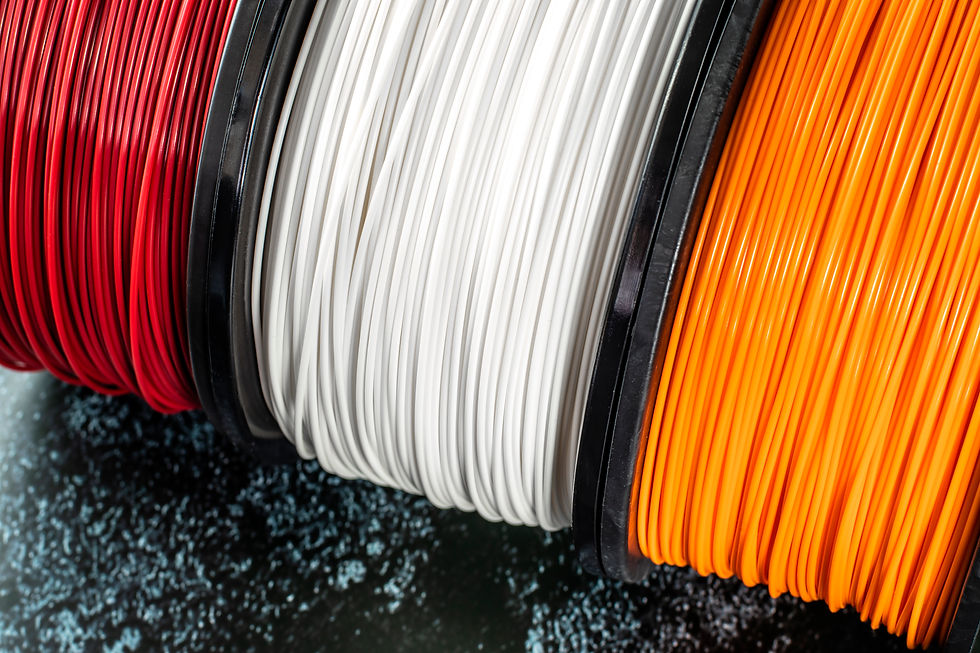Factors to Look for When Choosing Cables
- znergycable01
- Jul 29, 2022
- 4 min read
There are many good questions in our industry about the right cable size. We have summarized some of the important considerations we recommend when deciding on the right cable size. And what are the key factors while choosing a Fire Cables.

Now lets discuss the key factors of choosing cables,because one wrong cable can destroy your whole struggle behind your empire.
1. Current Capacity: This term refers to the calculation of the amount of current that a cable can carry. The current capacity of a wire or cable is directly proportional to its size. Current is expressed in amperes (ampere). The larger the cross-sectional area of the wire, the more current can flow.
2. Inductance: Inductance is a characteristic of a wire or circuit that induces an electromotive force when the current value changes. It delays tension. This can happen on the same wire or adjacent wires. This is expressed in microhenry (μH / Ft) per foot. Higher inductance can impede the flow of current in the wire.
3. Impedance: Electrical impedance is the total resistance provided by a circuit or wire to alternating current (AC) when a voltage is applied. Impedance is expressed in ohms (Ω). The length of the cable does not affect the impedance, but the impedance on the transmitting side and the receiving side must be the same.
4. Capacitance : Capacitance is a measure of the amount of charge a cable can store on its own. Capacitance is expressed in picofarads (pF / ft) per foot. High capacitance can affect cable performance at high frequencies.
5. Resistance : The electrical resistance of a cable is a measure of the difficulty of passing alternating current (AC) through the cable when a voltage is applied. It is represented by ohm (Ω). Cables and wires should have little or no resistance.
6. Propagation Velocity (Vp): The term refers to the speed at which a signal travels the length of a cable compared to the speed in free air. In real-world applications, cables slow down electrical signals. This deceleration effect is directly related to the dielectric material of the cable. Vp is expressed as a percentage of the signal speed in free space. The lower the Vp, the longer the delay. Therefore, choose a wire with a high percentage of Vp.
7. Voltage (volt): A measurement of electrical pressure along a conductor. The rated voltage is directly proportional to the thickness of the cable insulation. The thicker the insulator, the higher the rated voltage.
Commonly used insulator thicknesses and maximum permissible voltages are:
0.016 inch insulation = 300 volts (UL standard)
.010 inch insulation = 600 volts (military specification)
0.016 inch insulation = 1000 volts (military specification)
.032 inch insulation = 600 volts (UL standard)
8. Cable Material: The cable insulation material (the extruded layer that follows the conductor) plays an important role in cable sizing because it directly affects the maximum operating temperature of the cable. For reference, we have included common insulation (PVC, XLPE, EPR) in the guide. With standard cable material, PVC has a maximum operating temperature of 70 ° C, XLPE at 90 ° C and EPR at 90 ° C. For example, you may be wondering why you choose PVC over XLPE because of the low maximum operating temperature of PVC. This has to do with other properties of the material that work better in your installation. For example, PVC is much more flexible than XLPE, making it suitable when you need to bend a cable in tight spaces.
9. Cable length: Length of cable also plays very important thing while choosing cables. Because length of wire is important while connecting the terminals.
10. Ambient temperature: Our table assumes that the standard ambient temperature in free air is 30 ° C, or the ground temperature at a depth of 0.5 m is 15 ° C. Keep in mind that cable wiring and ventilation directly affect the ambient temperature. Therefore, it is important to consider the installation conditions along the overall length of the laying cable. If the temperature deviates from the standard temperature, a correction factor should be applied to the expected current load of the cable. The higher the ambient temperature than standard, the larger the cross-sectional area of the cable can be to support the required load.
11. Number of Circuits: Our table assumes that you are laying single-phase or three-phase circuits. When grouping circuits in an installation, it is important to apply a wire grouping correction factor to select the appropriate wire size to prevent overheating problems. The more circuits you integrate, the harder it is to dissipate heat, and you may need to scale up your cables accordingly.
Conclusion
Hope this article provides general principles for some important factors to consider when determining the minimum allowable cable size. Again, you should choose the smallest economical size that can handle all the conditions you are considering so that your cables are not overloaded. If you are searching the best cable manufacturer in Australia, then stay connect with Znergy Cables. Because Electrical Cable Australia means Znergy Cable.
Also Read: Points To Remember While Buying Power Cables



Comments